Maneno muhimu
Maelekezo
Baadhi ya maneno muhimu yaliyotumika katika moduli hii yamefafanuliwa hapa chini. Unaweza kuyachapisha ili uyatumie unapopitia moduli:
Allergen – A tiny particle, for example pollen, that lands on the surface of the eye or the skin around the eye and causes an allergic reaction.
Cataract – A milky or cloudy patch on the lens which appears as though the person’s pupil is cloudy. A cataract significantly reduces a person’s vision. Cataracts are most common in older people, but they can also affect younger people.
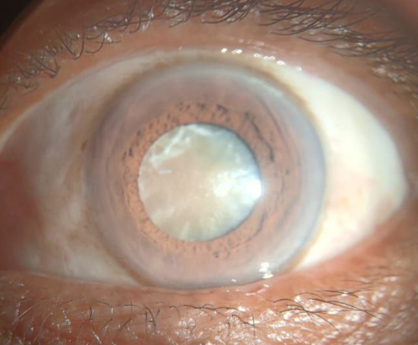
Photo credit: LV Prasad Eye Institute, India
Congenital – An illness or problem that a baby is born with.
Diabetes – A disease where sugar is high in blood. This can result in many health problems including difficulty in feeling parts of the body (especially feet) and consequent foot wounds, gradual loss of vision, kidney damage, urinary incontinence and difficulty remembering things.
Kutokwa na uchafu - Majimaji yanayotoka sehemu ya mwili. Mara nyingi kitendo hiki ni dakili ya maambukizi.
Kitu kutoka nje ya mwili - Kitu kisichohitajika ambacho kimekwama kwenye sehemu ya mwili lakini haipaswi kuwa hapo. Kwa mfano, nafaka ya mchanga chini ya kifuniko cha jicho au wadudu kwenye mfereji wa sikio.
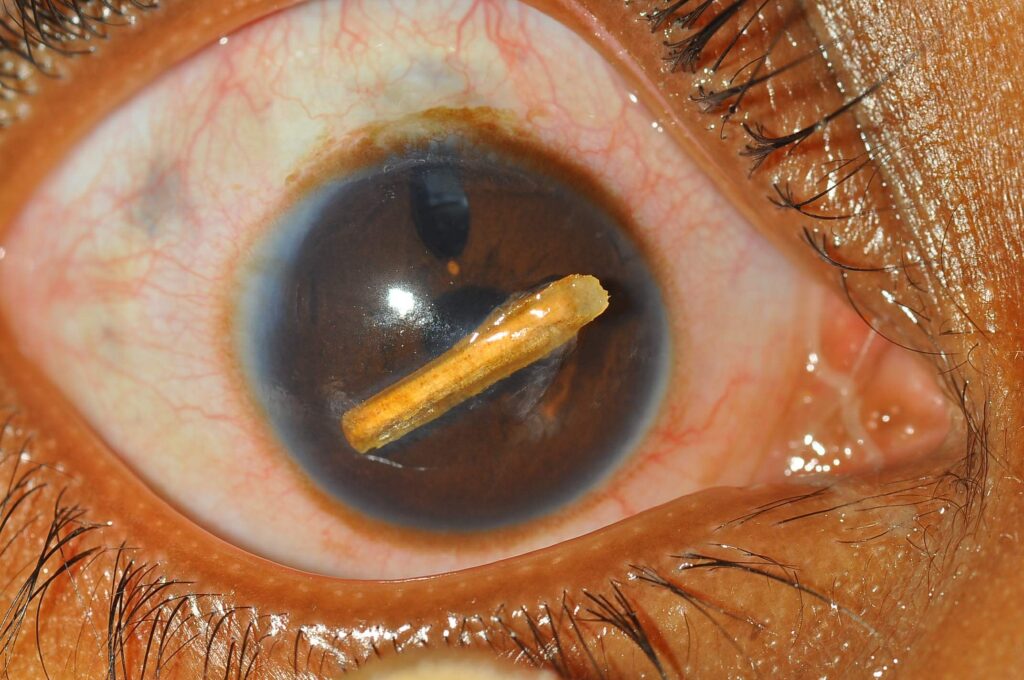
Photo credit: Aravind Eye Care System
Fundus reflex – Eye reflex in which light enters the eye through the pupil (black central part of the eye). The light reflects off the back of the eye (fundus), and returns through the pupil, appearing as a reddish-orange glow. The fundus reflex can appear differently, depending on the person’s skin colour.

Photo credit: Arclight Project, University of St Andrews
Lubricating eye drops – Eye drops that are used to help keep eyes moist. They can reduce eye discomfort and dryness.
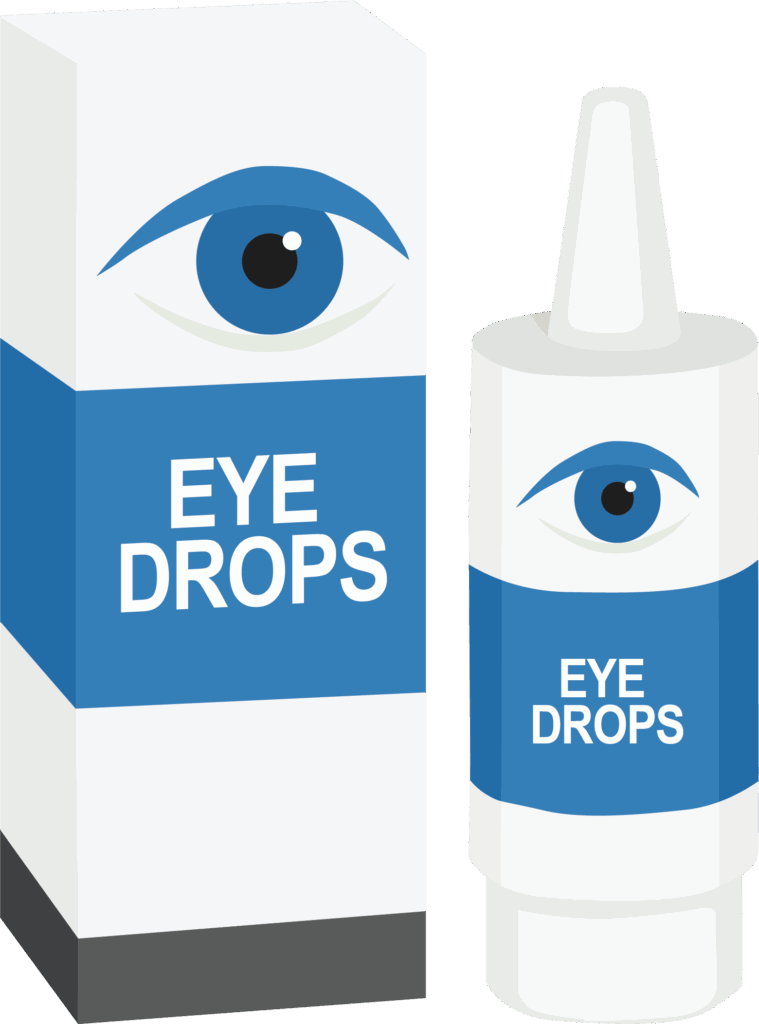
Near vision spectacles – Near vision spectacles work by making text or objects look larger (magnified). They are used for people with near vision problems in older adults. They help the person to carry out any activity that is within arms-reach.
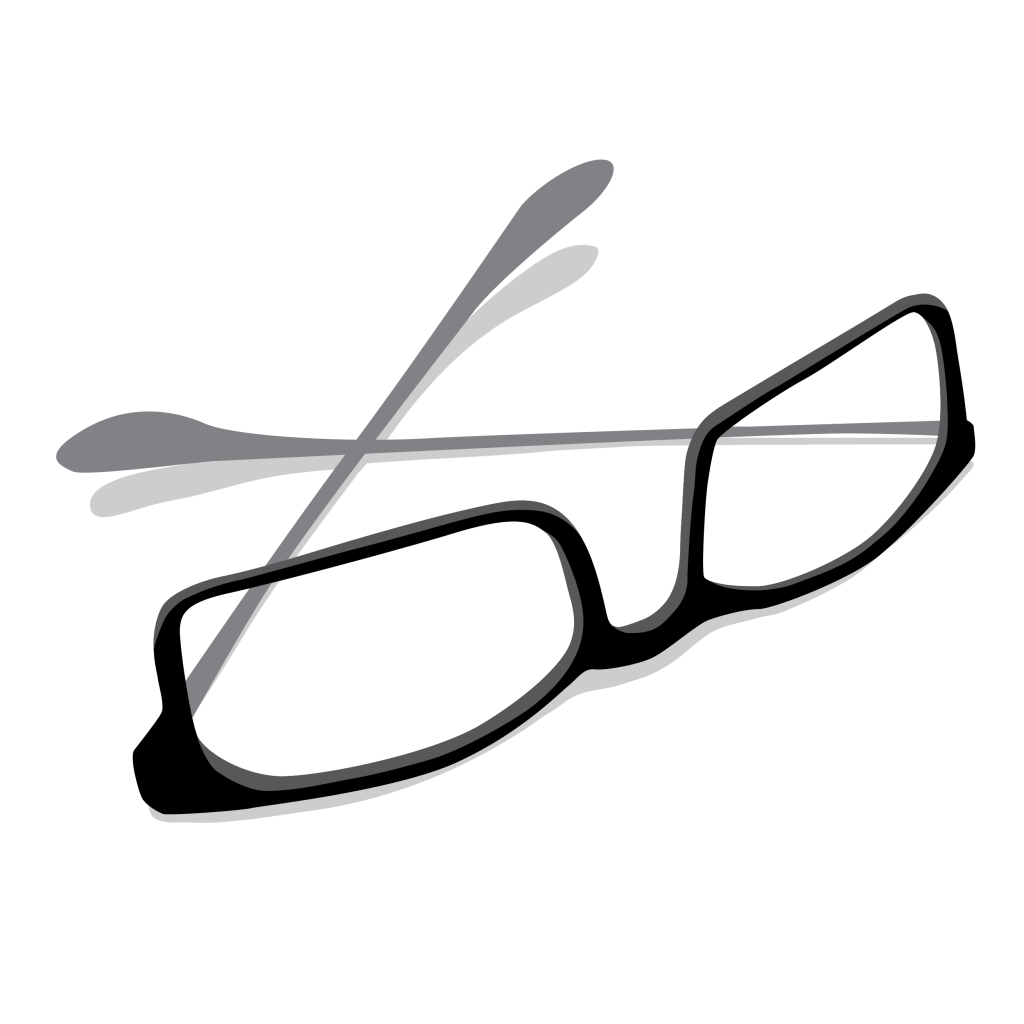
Ophthalmoscope – A device used to shine light into a person’s eye to see the back of the eyeball. An Arclight is a type of ophthalmoscope that can be used instead of a traditional ophthalmoscope.

Traditional ophthalmoscope
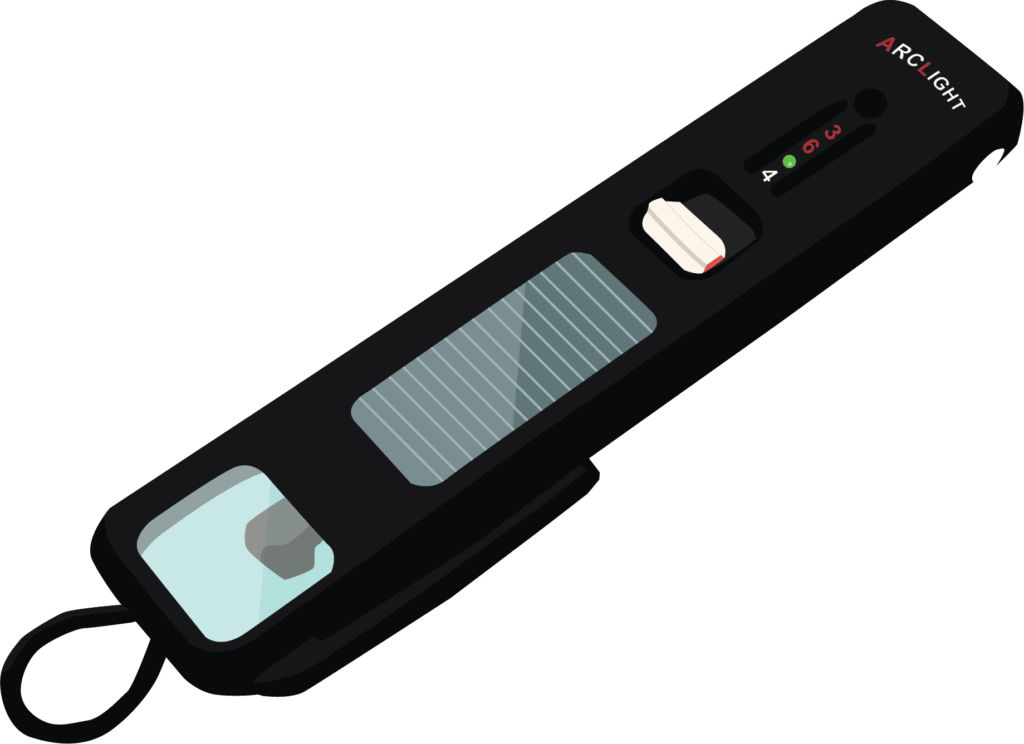
Arclight
Presbyopia – A near vision problem in older adults. People with presbyopia have difficulty seeing things that are close. Presbyopia only occurs as people reach the age of 40 or more.

Pupil reactions – The pupil is the dark part in the centre of the eye. It is where light passes into the eye. A healthy pupil reaction involves:
- The pupils getting smaller when light shines into the eyes
- The pupils getting bigger when no light shines into the eyes.
Topical antibiotic – Medicine that is applied directly to the skin or eyes to treat infection. Topical antibiotics can include drops and ointments.


Maelekezo
Ukipata maneno mengine ambayo huyaelewi vizuri, muulize mwenzako au mshauri wako.

